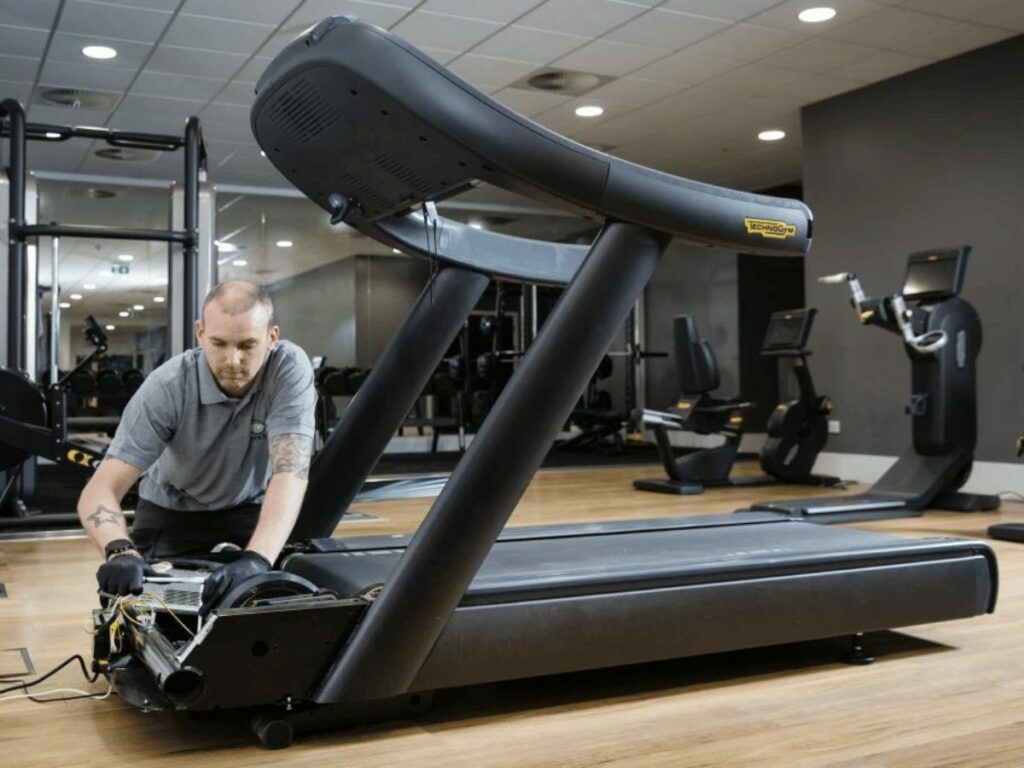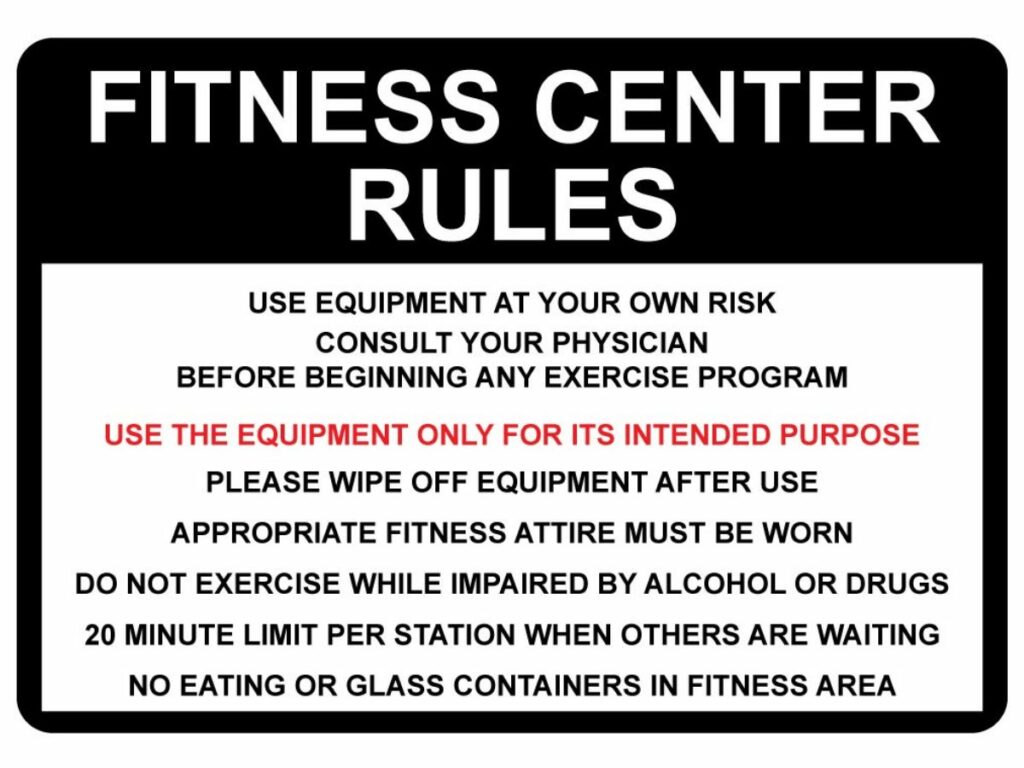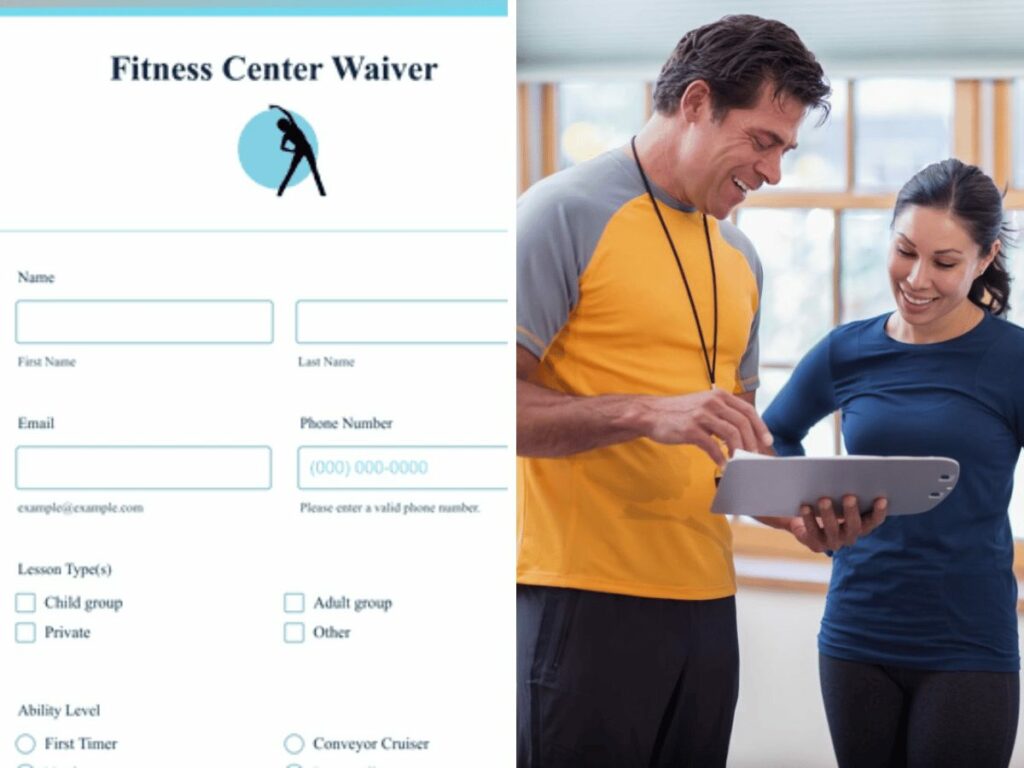Are you ready to face the reality that your gym, a sanctuary for wellness and health, could also be a hotspot for potential risks and legal threats? Are you confident that you have every risk under control in your fitness facility? In the hustle and bustle of gym operations, many gym owners often underestimate the extent of potential risks that could jeopardize both their clients’ safety and their business’ reputation.
Our guide shines a spotlight on these lurking hazards and provides a comprehensive solution. We help you identify, assess, and mitigate potential risks, ensuring your gym is not just a fitness hub but also a fortress against any threats. It’s time to safeguard your fitness kingdom, elevate your gym’s reputation, and protect your bottom line, including exploring options for fitness equipment grants for police departments.
Without further a do, let’s dive in!
Table of Contents
1. Identifying Potential Risks
Every gym owner needs to understand the potential risks involved in the running of a fitness facility. This section aims to shed light on those possible hazards, thereby giving an overview of potential risks. It is divided into 3 subsections as follows:
Facility and Equipment Risks
One primary area of concern in a gym setting is the potential risks linked to facilities and equipment. Regular inspection and proper maintenance of gym facilities and equipment are essential to ensure safety and minimize such risks. Hence, gyms worldwide are choosing Yanre Fitness, a top-grade manufacturer of gym equipment known for their products that can bear long-term abusive use.
Having experienced these equipment mishaps firsthand in the early stages of career, it became apparent how vital it is to maintain high safety standards.
Members and Staff Risks
Understanding and mitigating potential hazards for both members and staff involves evaluating gym protocols, training practices, and staff member’s competency levels. It’s not only about physical harm but also includes health hazards that can come from unsanitary conditions or lack of proper ventilation. As I run a gym for several years, the importance of gym hygiene and air quality became a major focus.
External Risk
Such as weather conditions and natural disasters, must not be overlooked. These external factors can have a severe impact on the operation of a gym, possibly leading to temporary or even permanent closure. For example, a gym located in a flood-prone area should have a well-thought-out emergency plan for such situations is critical.
2. Risk Mitigation Strategies
To ensure safety within a fitness facility, a well-structured risk mitigation plan is vital. This plan will involve a detailed analysis of different areas such as:
Facility and Equipment
The condition and safety of facilities and equipment are crucial in a gym environment. According to MicroMain, maintenance improves the safety of equipment and therefore the safety resulting in fewer on the injuries and accidents. This is why more gyms are turning to Yanre Fitness, with their high-quality gym equipment that not only meets international standards but is also designed for durability and user safety.

Member and Staff Safety
Protecting the safety of gym members and staff can be achieved through the provision of safety training and education on the correct use of gym equipment, as well as the enforcement of safety protocols and emergency procedures. Being proactive about safety education can create a culture of safety within the gym, fostering a secure environment for everyone.
External Risks
External risks refer to factors outside of the gym that can potentially impact the business. These include environmental disasters, legal issues, and market competition. To manage these risks, it is essential to have insurance coverage for various scenarios such as property damage or liability claims. As a gym owner, I advise to stay updated on industry trends and legal requirements to remain competitive and compliant.
3. Communication and Education
Communication and education are vital elements in ensuring gym safety. This aspect covers instructions throughout the facility and safety guidelines for the gym staff and members. Here are some communication and education strategies that can be used:
Signage and Warnings
Setting clear and comprehensible signage in a gym setting, provides warnings about potential risks and instruct members and staff on the correct use of gym equipment.From personal experience, having bold, clearly visible signs at critical points in the gym has been highly beneficial in reducing accidents and misunderstandings.

Regular Safety Orientations
Safety orientations play a crucial role in risk management. Such orientations ensure all members and staff are equipped with the knowledge necessary to use the facility safely. Workplaces that establish an effective safety and health management system can reduce their workplace injury and illness costs by 20-40%, according to OHSA.
Gym Etiquette and Safety Guidelines
Educational resources complement safety orientations by offering in-depth knowledge about gym etiquette and safety guidelines. These resources could be in the form of pamphlets, posters, or digital content available on the gym’s website. I am still amaze into how communication and education remain vital pillars of risk management in a gym environment, contribute to a well-informed and safety-conscious gym community.
4. Documentation and Record-Keeping
Documentation and record-keeping refer to the systematic process of organizing, storing, and maintaining information, typically for legal, financial, or operational purposes. It provides a traceable trail of actions, supports decision-making processes, and ensures compliance with regulatory requirements. Let’s know how these activities can help risk management in the gym:
Incident and Injury Reports
One critical aspect of this responsibility is keeping detailed records of incidents and injuries that occur within the premises. Such records serve as essential references in reviewing safety procedures and mitigating future risks. For example, in a gym where multiple ankle injuries have occurred during step aerobics classes, it might be prudent to review the class format, the equipment used, or the safety briefings provided before sessions.

Safety Protocols and Procedures
Establishing and enforcing safety protocols and procedures is paramount in how to manage a gym. However, these measures are of little use if they aren’t thoroughly documented. From a personal standpoint, having a robust set of documented safety procedures gives a sense of confidence and preparedness in case of an emergency. A well-documented safety protocol can serve as a valuable training resource for new staff members.
Audits and Reviews
Regular audits and reviews of the risk management plan are essential to its success. These audits provide an opportunity to assess the effectiveness of the plan and identify areas for improvement. As a gym enthusiast, a crucial part of this plan has always been to stay informed, stay prepared, and stay proactive. It also ensure that the plan evolves alongside the gym’s changing needs and circumstances.
5. Staff Training and Development
Numerous researches show that one of the best ways to reduce gym-related risks and hazards is to ensure that staff members are well-trained. Here are some strategies to consider during the staff training and development:
Training Staff
Training staff on risk assessment and mitigation enables them to understand potential hazards within the gym environment, assess their severity, and implement mitigation strategies effectively.Having experienced an unfortunate incident in the past, where a gym member slipped in the locker room, the importance of risk assessment and mitigation can’t be stressed enough. It’s an integral part of running a safe gym.

Updating Staff on Safety Protocols
Keeping staff up-to-date with safety protocols and procedures ensures that all staff members are familiar with the latest safety guidelines, which, in turn, helps them maintain a safe environment for gym members. As an expert in this industry, this helps mitigate potential risks and reduces the chances of accidents and injuries.
Ongoing Professional Development
Staff development ensures that staff members are equipped with the necessary skills and knowledge to deal with potential hazards or emergencies. Ongoing professional development can include training on first aid, safety procedures, and equipment use. Managing fitness employees emphasizes that a fitness manager must always be learning and keeping up with new trends.
6. Emergency Preparedness
Being prepared for emergencies is vital to the successful running of any fitness establishment. It is an essential aspect of risk management that ensures the safety of staff and gym members. Let’s explores the things to consider in preparing for gym’s emergency cases:
Emergency Response Plan
This plan should clearly outline the steps to be taken in case of various emergencies such as fires, severe weather, and health crises. It should include evacuation procedures, locations of emergency exits, and the availability and use of first-aid kits. In personal experience, taking the time to develop an in-depth emergency response plan may seem tedious, but its importance cannot be overstated.
Drills and Simulations
Regular drills help ensure that staff and members are familiar with emergency procedures, reducing chaos and confusion when a real emergency arises. Simulations, on the other hand, provide hands-on experience and test the practicality and efficiency of established emergency procedures.
In the course of running fitness establishments, regular drills have been found to foster a sense of confidence and readiness in staff and members alike. It may be a bit disruptive to normal operations, but the peace of mind it brings is absolutely worth it.
Emergency Services
The final element of emergency preparedness is the establishment of solid communication channels with local emergency services. This involves having easily accessible contact information for services such as the fire department, police, and local hospitals. Prompt communication with these services can significantly reduce response times during emergencies.
7. Insurance and Legal Considerations
Operating a gym is more than just keeping fitness equipment in good shape and designing effective workout programs. A substantial and often overlooked component of running a successful fitness center lies in the insurance and legal domain. This section will delve into key elements as follows:
Liability and Legal Requirements
At the heart of any gym’s risk management plan is a solid understanding of liability and legal requirements. Operating a gym implies an inherent risk due to potential injuries or accidents that can occur on the premises. The gym owner’s responsibility to ensure a safe environment for gym members must coincide with a solid understanding of the liability involved.
In running my gym, it is worth the investment to understand these aspects thoroughly and ensure all activities conform to the stipulated requirements.
Insurance To Adequate Coverage
Another vital element in risk management is working closely with insurance providers to ensure the gym has adequate coverage. I’ve learned to never underestimate the value of a robust insurance policy. Insurance policies function as a safety net that can protect the gym from potential financial losses due to claims, lawsuits, or property damage.
Legal Advice
Legal experts can provide invaluable insights into gym operations from a legal perspective. They can review contracts and waivers, advise on employment law, and guide through regulatory compliance. With the fitness industry being subject to several legal considerations, having legal advice readily available is instrumental in minimizing potential liabilities.
8. Continuous Improvement and Evaluation
Integral to the efficacy of any gym risk management plan is the process of continuous improvement and evaluation. This requires a systematic and periodic review of the plan and its components, making necessary modifications based on feedback and audit findings. The main facets of this process are the following:
Reviewing and Updating
A gym risk management plan should not be static; instead, it needs to evolve as the gym environment and associated risks change. This could be influenced by various factors, such as the opening of a gym, the introduction of new fitness equipment, changes in staff, or modifications in the gym’s layout or programs. Regularly reviewing and updating the risk management plan ensures it remains effective and relevant.
Collecting Feedback
A gym’s members and staff are its primary stakeholders and, as such, their input is vital in the continuous improvement and evaluation process. Regular feedback from these groups can provide valuable insights into potential risks not initially identified or new risks that have emerged over time. I’ve seen that harnessing the insights of members and staff is not just beneficial—it’s essential.
Periodic Audits and Assessments
These audits should focus on the implementation of the risk management plan, including reviewing safety protocols, equipment maintenance schedules, and staff training programs. Such audits can reveal gaps in the current plan and shed light on areas that need more attention.In my journey as a gym owner, audits have often been the “reality check” that ensures risk management strategies are working as intended.
The following table outlines the key periodic audits and assessments for ensuring effective risk management in a gym, focusing on safety protocols, equipment maintenance, staff training, facility security, and member feedback.
| Audit/Assessment | Frequency | Focus Areas | Purpose |
| Safety Protocol Review | Quarterly | Review of gym’s safety protocols and procedures | Ensure that safety protocols are up-to-date, effective, and compliant with regulations. Identify any gaps or areas for improvement. |
| Equipment Maintenance Assessment | Monthly | Inspection of gym equipment for wear and tear | Identify any equipment that requires maintenance, repair, or replacement to prevent accidents and injuries. Ensure compliance with maintenance schedules and track overall equipment performance. |
| Staff Training Program Audit | Annually | Review of staff training materials and manuals | Ensure that staff members are adequately trained to handle potential risks and emergencies. Identify any training gaps and provide additional training as necessary. |
| Facility Security Evaluation | Biannually | Assessment of physical security measures | Identify any security vulnerabilities and implement measures to enhance the safety and security of the facility. Ensure compliance with security standards and protocols. |
| Member Feedback Survey | Annually | Solicit feedback from gym members regarding safety concerns or observations | Gather insights from gym members about their perceptions of safety and identify potential areas of improvement. Enhance member engagement and trust by addressing their feedback and concerns. |
9. Conclusion
In the realm of fitness, safety, and health, risk management isn’t just a checklist item, but a proactive and ongoing commitment. It’s not a static goal but a dynamic process, evolving with every new challenge and discovery.
As a trusted gym equipment manufacturer, Yanre Fitness is your partner in this journey towards achieving a safe and healthy gym environment. We’re here to provide insights, tools, and top-tier gym equipment that aligns with your risk management strategies. Feel free to contact us for more product details or if you have any questions.
Related articles:








